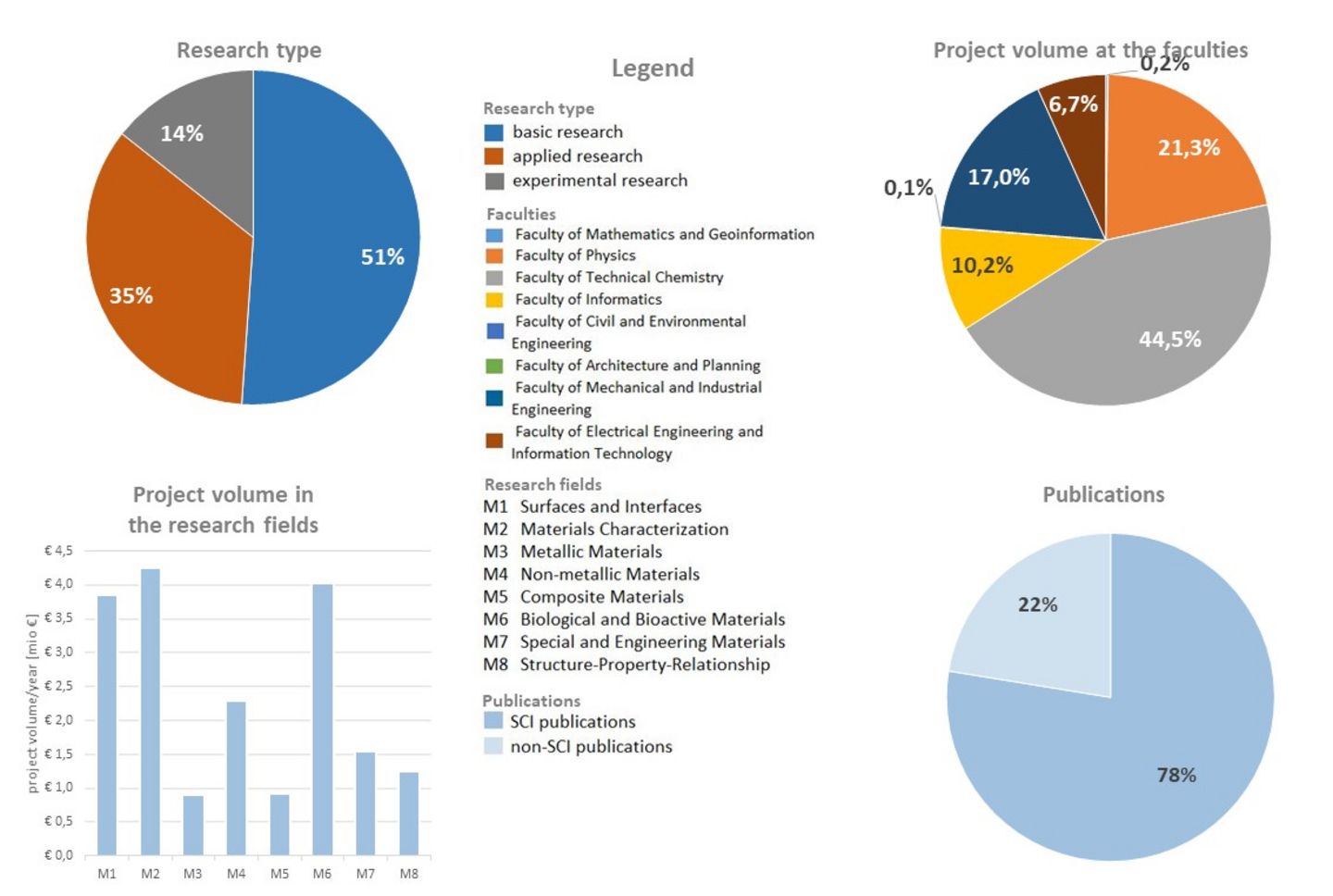Materials and Matter
Materials research at TU Wien takes place under the umbrella of the research focal area Materials and Matter. This interdisciplinary area investigates the properties of different materials – right down to the very last layer of atoms. The findings are used in the creation of new, perhaps even futuristic technological applications. There are no limits to creativity: innovative materials for aircraft or construction, material properties which are revolutionising microelectronics, micro-structures inspired by nature and adapted for use in technology.
Understanding the properties of materials
Stone Age, Bronze Age, Iron Age – we name entire historical epochs after the materials that were being worked at the time. What materials will define our lives in the future? TU Wien is achieving important pioneering work in many quite different research projects in the search for the materials of tomorrow.
Material science is an inter-disciplinary field – many research questions can only be answered if differing specialisms work together. At TU Wien there are highly successful cross-faculty research projects – for example the work on metal oxides, in the area where physics and chemistry intersect, and the light controlled production of micro-structures – in which research teams from mechanical engineering and chemistry are participating.
The small and the mighty
Material research is carried out at vastly differing scales. It is just as involved with the atomic properties of new types of nanostructures as it is with the strength of new building materials or special metals for cars or aircraft. Sometimes it is also essential to combine the microscopic and the macroscopic worlds in one research project. Macroscopic material properties can be explained at the micro level. Completely new and exotic material properties promise exciting technological applications. The phenomenon of superconductivity still presents us with unresolved questions. Fascinating new electromagnetic material properties play an important role in micro-electronics. In such fundamental research fields, material research is closely related to the research focal areas of Quantum Physics & Quantum Technologies and Computational Science & Engineering. Many of the best materials have already been discovered by nature – biomimetics, the imitation of ideas from nature for technological applications, plays an important role in material research. Micro structures on the skin of sharks optimise their hydrodynamic properties. Trees grow to a height of dozens of metres because their wood provides them with remarkable stability.
If we understand nature's tricks, we can copy them and ultimately extend their technological use way beyond the examples from nature.
- Surfaces and Interfaces
- Materials Characterization
- Metallic Materials
- Non-metallic Materials
- Composite Materials
- Biological and Bioactive Materials
- Special and Engineering Materials
- Structure-Property-Relationship
Continuous growth and impressive success with highly lucrative research funding programmes – the development of the research focal area Materials and Matter and associated research fields has yielded positive results. It is mainly five of eight faculties at TU Wien that are active in this area, around 65% of the institutes/103 research groups carry out research into materials science.
The third-party funding obtained in 2019-2021 for research projects in Materials and Matter is approximately EUR 18.9 million per year (around 325 projects in basic and applied research). The academic output is reflected in the approximately 500 publications per year.

In the research focal area Materials and Matter, 51% basic research, 35% applied research and 14% experimental development is carried out.
The project volume is divided among the faculties as follows: 0.2% Mathematics and Geoinformation, 21.3% Physics, 44.5% Technical Chemistry, 10.2% Civil and Environmental Engineering, 0.1% Architecture and Planning, 17.0% Mechanical and Industrial Engineering, and 6.7% Electrical Engineering and Information Technology.
The project volume in the individual research fields can be presented as follows: EUR 3.8 million in the research field Surfaces and Interfaces, EUR 4.2 million in the research field Materials Characterization, EUR 0.9 million in the research field Metallic Materials, EUR 2.3 million in the research field Non-metallic Materials, EUR 0.9 million in the research field Composite Materials, EUR 4.0 million in the research field Biological and Bioactive Materials, EUR 1.5 million in the research field Special and Engineering Materials and EUR 1.2 million in the research field Structure-Property Relationship.
- Institute of Chemical Technologies and Analytics
- Institute of Materials Science and Technology
- Institute of Applied Physics
- Institute of Chemical, Environmental and Bioscience Engineering
- Institute of Applied Synthetic Chemistry
- Institute of Solid State Physics
- Institute of Materials Chemistry
- Institute of Biomedical Electronics
- Institute of Geotechnics
- Institute of Mechanics of Materials and Structures
- Institute of Material Technology, Building Physics, and Building Ecology
- Institute of Solid State Electronics
The selection relates to the size of the project volume in the specified period, as well as the proportion of the project volume in the key area of research, the institute project volume, and the proportion of publications.
All data and information provided relates to the research period 2019-2021 (based on the period of the Performance Agreement).
